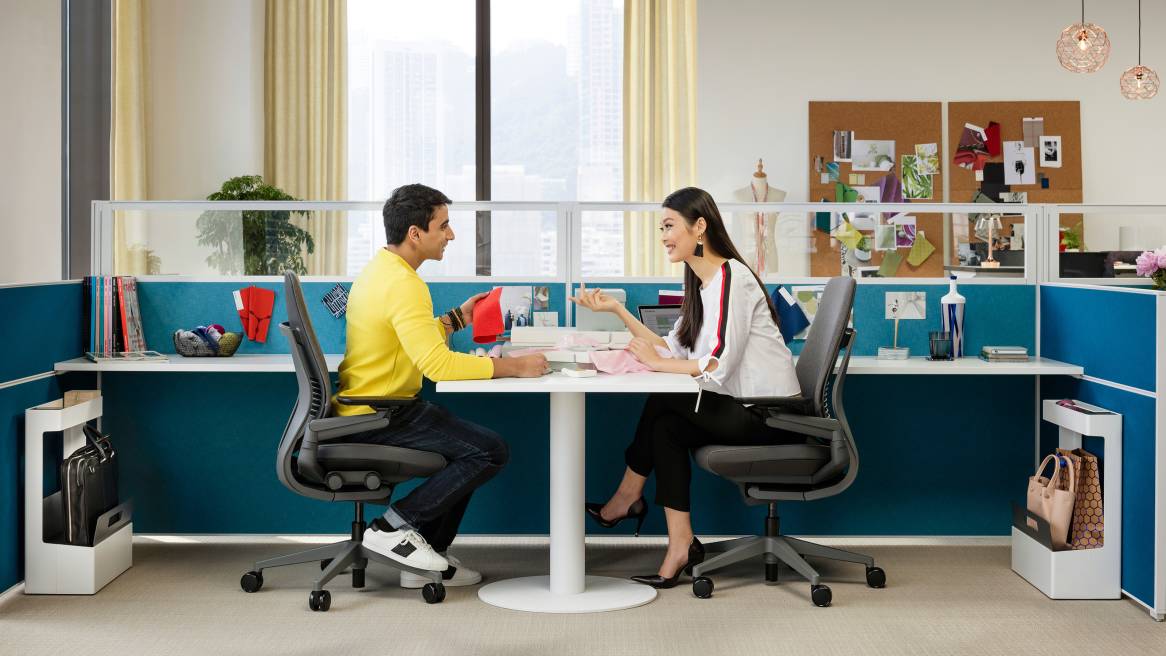Accelerating Innovation
Over the past decade, India and China have evolved from outsourcing support nodes to leading global innovation hubs. With speed and agility never seen before, they have advanced their capabilities to position themselves as innovation leaders.
In the 12 months leading up to October 2017, Asia opened its doors to 19 new innovation hubs—multimillion-dollar centers of excellence that pioneer advancements across industries. The surge increased the continent’s share of the world’s ideation center to 29 percent, four points ahead of Europe and only a few strides behind Silicon Valley’s 38 percent. While the latter remains the world’s largest innovation destination, its share has dropped 20 points since 2015, and Asia’s growth markets are gaining significant ground in attracting foreign investment
earmarked for innovation.
Nowhere is this more evident than in India and China, where organizations are evolving from support centers to leading innovation centers that are changing the way we interact with technology. Backed by more mature, advanced markets like Japan, South Korea, Australia and Singapore, the remarkable transformation is paving the way for Asia to overtake Silicon Valley as the globe’s preferred innovation destination.


“In 2013 our researchers picked up the first glimmers of China and India’s potential as hubs for ideas,” explains Elise Valoe, a global research manager at Steelcase who recently completed a one-year, in-depth study of innovation in China and India to better understand the unique challenges organizations looking to innovate are experiencing. “This was the start of an unprecedented change in how they do business. China has a history of making parts and components for other companies. About five years ago, they changed their strategy and became increasingly focused on creating products of their own – leveraging their knowledge and manufacturing prowess to gain global recognition as technology leaders.”
According to the World Economic Forum, China is the second-largest spender on research and development (R&D) after the United States, accounting for 21 percent of the world’s total of nearly $2 trillion in 2015, and its spending on R&D grew by 18 percent between 2010-2015, more than four times faster than in the United States. The World Economic Forum predicts China’s rapid growth means it is likely to take the lead within the next 5-10 years.
It’s clear this is already making an impact. With a 25 percent increase in innovation centers, a 47 percent increase in patent applications, a 39 percent share of Fortune 500 companies and an 8 percent bump in foreign direct investment in 2016, it is undeniable that the rush for innovation has accelerated exponentially.
Creating a Next-Generation Workforce
The rapid shift from process-based to creative work is also being heavily supported by governments in China and India through investments: developing new skill sets and creating a sustainable innovation ecosystem. The Chinese government has been encouraging development through economic incentives for hubs like Shenzhen, where products are moving to market at breakneck speeds. By collaborating with the private sector to sponsor scholarships, innovation forums and hackathons to support educational institutions, China is grooming the next generation of tech practitioners and, in turn, tapping into savvy, young talent via these institutions. In 2018 alone, China is expecting 8.2 million college students to graduate—a number 10 times greater than in 1997 and twice as many students as the United States. India is taking a more collaborative approach by inviting multinational companies to connect with local innovators. Either way, governments are committed to improving the quality and availability of higher education to feed the talent pipeline.

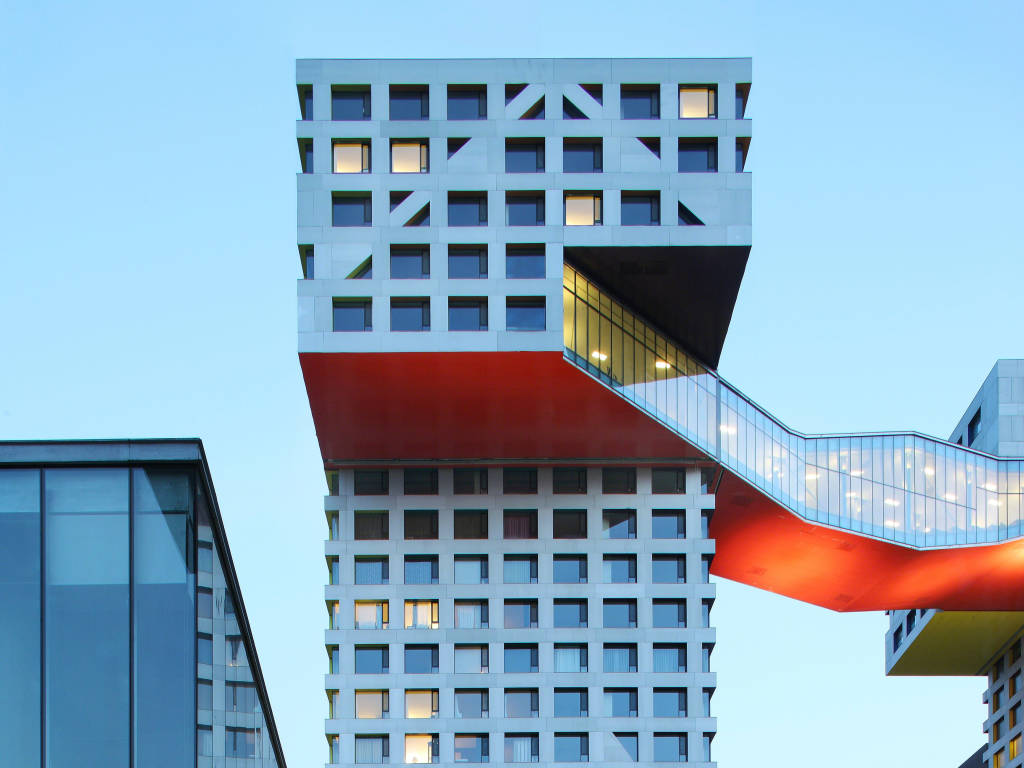
Today, India is considered one of the fastest growing economies in the world and home to Bangalore—currently rated as the world’s most dynamic city, ahead of Silicon Valley, by the World Economic Forum. The country’s booming tech start-up system, attracting over US $20 billion in the past 36 months, is the third largest in the world. With over 10,000 engineering institutes, India produces more engineers than China and the United States combined, and adds up to 12 million young people to its workforce annually. The country’s abundant supply of young engineers means it’s easier to hire employees. Last year, a survey by LinkedIn and Capegemini identified India as the biggest source of digital talent in the world. The study found that 76 percent of the country’s workforce has digital skills.
“Pushing an aggressive innovation agenda across the board requires a confluence of factors,” says Valoe. “In Asia, we see interesting and vibrant innovation hubs or networks emerge in geographical areas where the interests of government, local culture, private sector, educational institutions and venture capitalists are aligned. In this case, especially in India and China, we have observed cities in which the entire ecosystem is invested in innovation.”
And multinationals have noticed. Traditionally considered a cost-effective hub for outsourced business services with English language skills, multinationals now have their sights set on India as a crucial part of their innovation agenda. In 2016, Apple launched an innovation center in Hyderabad to accelerate the development of Maps, its web-based mapping service and created up to 4,000 jobs. LinkedIn, Uber, Facebook and Google have followed suit. The latter’s largest R&D center outside the United States, housing 13,000 employees over two million square feet of space, is slated to open in Hyderabad next year.
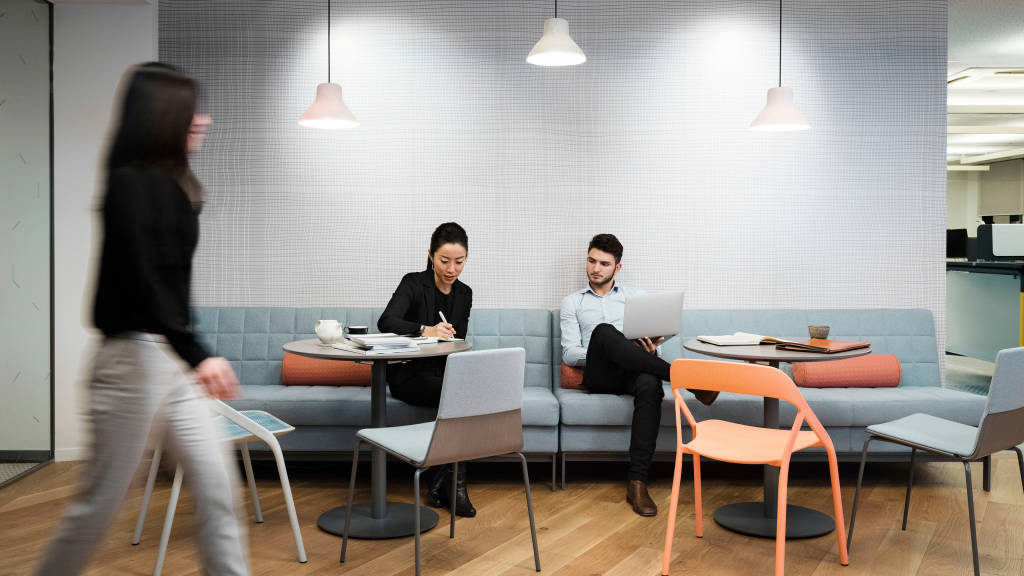
Similarly, China has developed from a manufacturing hub into a technology powerhouse overnight and is now home to some of the world’s largest internet and technology companies. “China’s factories are not only on par with global standards, we see the emergence of local heroes in the banking and tech industries that heavily invest in technology expertise abroad and capitalize on the country’s scalable manufacturing expertise to move to market at breakneck speeds—creating improved products that compete, and often lead, on a global scale,” says Valoe.
The global tech space, traditionally dominated by US-based companies, is more competitive than ever. Homegrown conglomerate Tencent was recently named one of the world’s most innovative companies by Fast Company. Its messaging app, WeChat, has more than 980 million users. While Tencent is already looking towards its next paradigm shift, Facebook and Snapchat are experimenting with WeChat-inspired business features and payment services. Tencent is merely the tip of the iceberg. The trend is evident across a broad range of industries.
Take for example, DJI, the global drone manufacturer with headquarters based in Shenzhen. “When we launched the Mavic Pro, the industry’s first foldable, compact consumer drone, our engineers went back to the drawing board the very next day and started to think how we could top it,” says Kevin On, DJI’s director of communication. “We’re constantly asking ourselves what can we do differently or how could we evolve our technology for future applications. What if we created a handheld gimbal using our drone’s stabilization technology? Why not let people control their drone with hand gestures to make flying fun and easy?”
Making the Shift
Organizations within innovation hubs across India and China are restructuring to drive innovation and optimize their business models. Innovative or knowledge-based work, by its nature, requires a higher level of creativity and collaboration—a style of working that traditionally has not been practiced here. Work environments are designed to support individual, process-based work and maximize efficiency and productivity.
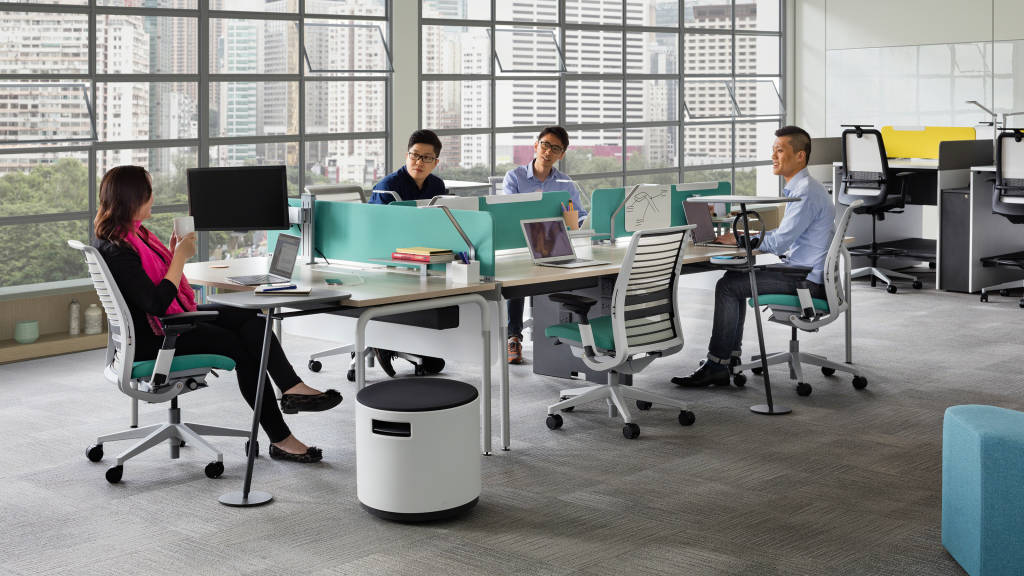
“Innovation is born from generative teamwork and this requires giving employees a greater degree of creative latitude and increasing the company’s comfort level with risk and ambiguity,” explains Valoe. “In China, for instance, lightning-paced product development processes deliver new products on shelves—where they are adopted fast by tech-savvy consumers—before a refined iteration follows in incredibly quick succession. The levels of ambiguity tend to remain low, and organizations choose speed to market and incremental innovation over disruptive innovation. This is their competitive advantage,” continues Valoe.
“On the other hand, companies based in India allow higher levels of ambiguity, pushing teams to really stretch their creative muscle, take risks and explore new ideas. Higher levels of creative latitude counters the speed at which a company can move to market as decision-making takes longer, but it’s more likely to lead to something novel.”
Six Approaches to Innovation
The Steelcase research team identifies six approaches to innovation that organizations in China and India can use, based on their level of democracy and comfort with the ideation process. In markets like India, that are more exploratory and invested in generating ideas, innovation tends to be decentralized as companies spread the net wider and tap into external networks. In China, companies err on the side of caution with tighter briefs, and innovation teams are kept closer to home.
“Innovation is born from generative teamwork and this requires giving employees a greater degree of creative latitude and increasing the company’s comfort level with risk and ambiguity.”
Elise ValoeSteelcase, Global Research Manager
According to Valoe, internal innovation teams, or what are more commonly referred to as think tanks, are most likely the best innovation model for a company with a more conservative approach to innovation. These companies might also consider identifying individual champions of innovation to lead their efforts or use an open innovation or hackathon model, where a group of people work collaboratively in a short timeframe to ideate and solve problems.
Companies with more decentralized approaches to innovation should consider engaging with a consultant to advise on innovation, set up a satellite innovation office or outpost or work with a third party or incubator.
Fostering Creative Behavior
A fundamental change of this scale typically takes more than two decades. In many instances in India and China, it took less than five years. While some companies have adopted more dynamic and agile work environments that foster innovation, Steelcase researchers observed that many organizations have not made the necessary changes to their space and culture and are struggling. Often, people are working in traditional cubicles and have little access to project spaces or the digital and analog tools they need to share content to effectively collaborate.
“The creative work required for innovation to happen requires very different behaviors than those of process or task-based work that has traditionally happened in India and China,” explains Valoe. “Organizations need to encourage the behaviors required for a new way of working. The work environment must be designed to reinforce this change. This requires a big culture shift.” DJI’s On agrees. “Environment is a big part of the culture. I think in many offices around the world, especially with tech companies and start-ups, the walls have been broken down to encourage open communication,” says On. “We have an open office concept with hot desks, standing desks and sofas. Connecting with each other opens the door for collaboration. Collaboration facilitates the exchange of ideas and innovation is driven from new ideas, new perspectives and new ways of doing things.”

The hierarchy found in many organizations across Asia is another barrier to innovation. “Rigid hierarchical structures tend to sabotage innovation,” says Wu Liping, president at Chinese packaging equipment company Joyea. “Business goals can get misdirected by the power dynamics. Trust drives honesty and communication which improves efficiency and new solutions for our clients. Equality is important too. We respect, support and care about each team member. We want everyone to feel valued. This not only creates a positive environment, but also boosts performance.”
Gearing Up For Innovation
So what can organizations do to create the right conditions for the innovation process to thrive? During their study, Steelcase researchers identified three requirements:
- Set an innovation agenda and define the company’s future direction.
- Identify an innovation model to implement; this will determine the team structure and interactions.
- Establish new practices and methods that will drive innovation and identify workplace coaches to reinforce the desired behaviors.
“This will signal to employees they need to adopt new workstyles, and the physical workplace will have to be reimagined to support and reflect a culture of innovation,” says Valoe.
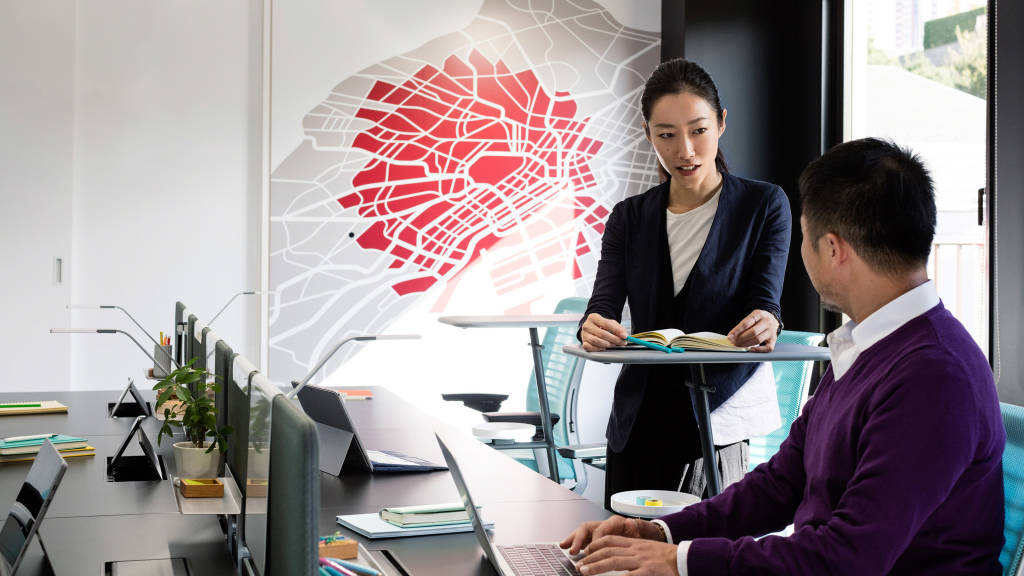
A New Work Experience
Innovation requires a workplace where people can build strong networks, develop trust and learn from each other. “The workplace should provide a variety of settings that address the different needs of the creative process,” says Valoe. “People need different spaces for different types of work—spaces for collaboration, for heads-down focused work, as well as places where they can get away to rejuvenate or socialize with their peers. These spaces need to foster a culture of innovation where new ideas and different ways of thinking are encouraged.”
So what does a workplace where a culture of innovation is celebrated look like? It supports continuous learning, open communication, freedom to express ideas, transparency, equality and empowerment. It looks a lot like this:
A shared learning experience
Imagine working on a cross-functional team project. Instead of sitting at your own desk, you join a team of product marketers, designers and engineers in a designated project space. Collaboration here feels natural and has been designed to build a common knowledge base among team members. Tables are easy to move and can be arranged in various configurations throughout—pushed together for group workshops and separated for focused work or smaller group collaborations. Space is available for consultants, who join the project on a freelance basis. Digital and analog communication tools make sharing easy and accessible, so everyone can learn from one another and share diverse perspectives from the various disciplines and backgrounds.
A progress board captures and visualizes the team’s successes and failures—which are also celebrated—as they rapidly explore and test ideas, with goals set on a daily and weekly basis. When a milestones is reached, tables can be pushed together for a team lunch or “happy hour” to celebrate together.
The importance of feedback
Large meetings for pitching ideas and debating approaches can be intimidating for more introverted team members, or those that prefer some time to digest, absorb and filter information before arriving at conclusions. Create an environment where all team members can give and receive meaningful feedback. Easily accessible and informal cafe-style tables, for small groups of two to four, encourage teams to connect more frequently. These regular opportunities to test their ideas in small groups accelerate trust-building.
Try framing meetings as a way to encourage discussion. During feedback sessions, write ideas on Post-its and share them in the space so that everyone’s voice is heard. Fixed or mobile writing surfaces and pinboards can help here. Informal lounge settings adjacent to larger meeting areas provide comfortable spaces for quieter team members to reflect upon the ideas discussed and add to the conversation by voicing ideas one-on-one.
Ideas are owned by the team
Sometimes the way an idea is communicated is as important as the idea itself. Sharing and critique is important to test and develop ideas. Encourage team members not to become too attached to their own work, but to tap into the benefits of co-creation. Develop everyone’s presentation skills by testing or micro-pitching with the team. A range of small presentation spaces for clusters of two to four people are less intimidating for presenters who may not be as confidant in a more formal setting. Make these spaces readily accessible for impromptu catch-ups so that these behaviours become rituals. Ideas will evolve more rapidly and everyone will become more confident to present their work.
When it’s time to bring a concept to life, split team responsibilities. Some team members can meet in their makerspace to start prototyping, while others connect with a customer or a startup to see if their latest concept is resonating.
Creating a Culture of Innovation
For organizations in China and India to manage a sustainable shift to innovation, they will need to eliminate barriers and bureaucracy between leaders, teams and departments so information can flow freely. They will also have to give all stakeholders the freedom and physical tools they need to express their ideas and give new concepts a chance.
Changing the physical environment changes behaviour which, over time, creates culture—a culture of innovation.

